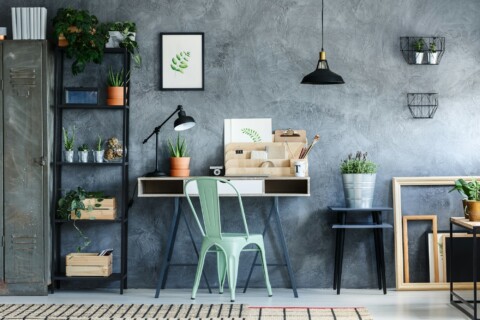Choosing the right color palette for your home can have a profound impact on the look and feel of your space. From setting the mood to enhancing functionality, the colors you choose can make all the difference. In this article, we’ll explore the power of color and provide tips for selecting the perfect palette to suit your style and preferences.
1. Understanding Color Psychology: Harnessing the Emotional Impact of Color
Color psychology plays a significant role in interior design, as different colors can evoke various emotions and moods. For example, warm tones like red and orange can create a sense of warmth and energy, while cool tones like blue and green can promote feelings of calm and relaxation. Understanding the psychological effects of color can help you choose the right palette to achieve the desired atmosphere in your home.
2. Assessing Your Space: Considering Lighting, Size, and Functionality
Before selecting a color palette for your home, take the time to assess your space and consider factors such as lighting, room size, and functionality. Dark colors can make a small room feel even smaller, while light colors can create a sense of spaciousness. Additionally, consider how each room will be used and choose colors that enhance functionality and promote productivity.
3. Finding Inspiration: Drawing Ideas from Nature, Art, and Design Trends
Draw inspiration for your color palette from a variety of sources, including nature, art, and current design trends. Take cues from the colors found in natural landscapes, artwork, and interior design magazines or websites. Pay attention to colors that catch your eye and evoke the mood or aesthetic you want to achieve in your home.
4. Creating Cohesion: Establishing a Unified Color Scheme Throughout Your Home
Create cohesion throughout your home by establishing a unified color scheme that flows seamlessly from room to room. Choose a primary color palette and select complementary colors for accents and accessories. This will create a sense of harmony and continuity throughout your space, tying the various rooms together.
5. Testing Before Committing: Sampling Colors and Evaluating in Different Lighting Conditions
Before committing to a color scheme, it’s essential to test your chosen colors in the actual space and evaluate them in different lighting conditions. Paint samples on small sections of the wall and observe how they look throughout the day, in both natural and artificial light. This will ensure that you’re happy with the colors before making a final decision.
6. Playing with Texture and Finish: Adding Depth and Visual Interest
Don’t forget to consider texture and finish when choosing your color palette. Matte finishes can create a soft and subtle look, while glossy finishes add shine and reflectivity. Experiment with different textures and finishes to add depth and visual interest to your space, creating a dynamic and inviting atmosphere.
7. Personalizing Your Palette: Infusing Your Home with Your Unique Style and Personality
Make your color palette truly your own by infusing it with your unique style and personality. Consider colors that resonate with you personally and reflect your interests, passions, and lifestyle. Whether you prefer bold and vibrant hues or soft and understated tones, choose colors that make you feel happy and comfortable in your home.
8. Seeking Professional Advice: Consulting with Interior Designers or Color Experts
If you’re feeling overwhelmed or unsure about choosing the right color palette for your home, don’t hesitate to seek professional advice. Interior designers and color experts can provide valuable guidance and insights to help you create a color scheme that suits your style, preferences, and budget. They can also offer recommendations for coordinating colors, finishes, and textures to achieve the desired look and feel in your space.
In conclusion, selecting the perfect color palette for your home is an important aspect of interior design that can significantly impact the overall aesthetic and atmosphere of your space. By understanding color psychology, assessing your space, finding inspiration, creating cohesion, testing colors, playing with texture and finish, personalizing your palette, and seeking professional advice, you can choose a color scheme that enhances the beauty and functionality of your home while reflecting your unique style and personality.





